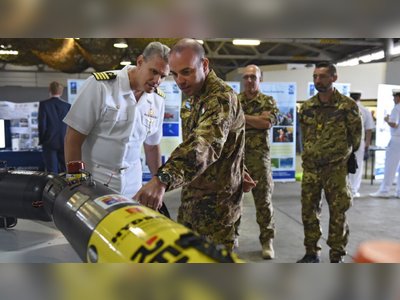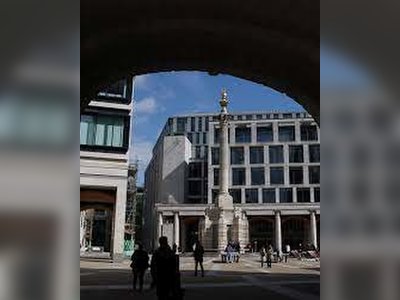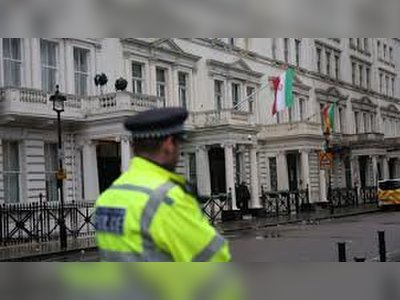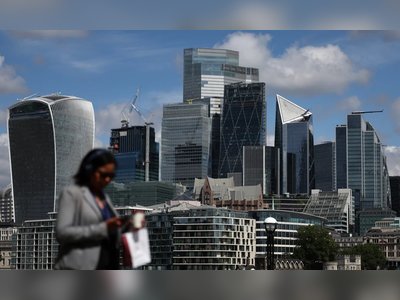
10 US cities paving the way for the future by investing in technology, sustainability, and infrastructure
If city leaders across the country learned anything from the past year, it's the value of resilience.
The COVID-19 pandemic exposed cracks in infrastructure, posed mobility challenges, and revealed a digital divide. The places that have fared the best are the ones that have been investing in the future, specifically in areas like digital transformation, manufacturing, sustainability, infrastructure, and innovation.
"I don't think we talk about resilience enough," Diana Bowman, co-director of the Center for Smart Cities and Regions at Arizona State University's School for the Future of Innovation in Society, told Insider. "Resilience talks about our capacity to respond in a quick way to address whatever those external challenges are."
While investing in technology and infrastructure is key for cities of the future, Bowman said that resilience also depends on strong partnerships across the public, private, and local university sectors.
"One of the things that we've seen in this last 12-month period is if you take your eye off the ball at any single one of these, then your ability to have a fully engaged school system, fully engaged workforce is really challenged, and everybody suffers as a consequence of that," she said. For example, the influx of people working and learning from home revealed a lack of access to high-speed internet in some places.
Cities of all sizes should be thinking about building a better tomorrow through investment and policy, or risk getting left behind.
The need for cities to innovate and be more sustainable is coming, whether they're prepared or not, Zachary Schafer, CEO and executive director of United for Infrastructure, a nonprofit working to modernize and repair the country's infrastructure, told Insider. "It's better to be developing frameworks early to understand how to deploy them, how to use them, how to benefit from them, and how to talk to residents about these technologies."
Several US cities are already leading the way. Here's a look at 10 places making big strides when it comes to innovation.
The cities are listed in no particular order.
Chicago, Illinois
 Chicago is using digital trackers to collect data on the environment and activity to help improve city conditions.
Chicago is using digital trackers to collect data on the environment and activity to help improve city conditions.
The city of Chicago has several programs in the works aimed at updating infrastructure and advancing manufacturing.
One example is the Smart Lighting Program, which some have referred to as the largest streetlight modernization project in the nation. It involves installing wireless, LED lights across the city, which can be dimmed or controlled remotely. The goal is to cut energy costs and improve public safety.
To function as a kind of "fitness tracker" for the city, the Array of Things (AoT) project included placing sensors throughout the city to collect data on the environment, infrastructure, and activity. The purpose is to address traffic safety and flooding, reduce costs, and make the city more efficient and equitable.
Both the streetlight and AoT programs come with interactive elements, so residents can track their progress and view the data collected.
"Chicago has a good program for launching projects using digital technologies to transform the city landscape," Schafer said. "You're building the foundational infrastructure for a smart city or for a city to use to make smart decisions."
On the manufacturing front, Chicago is home to MxD (Manufacturing times Digital), which opened in 2015 to focus on digital design, automation, and digital in manufacturing. MxD is part of the Manufacturing USA initiative, which established institutes across the country to focus on different areas of technology and digital transformation in manufacturing and supply chain.
MxD helps educate manufacturers about digital tools and processes. It has a mock production line, projects to help digitize equipment, and cybersecurity technology developed with the University of Illinois at Urbana-Champaign.
Honolulu, Hawaii
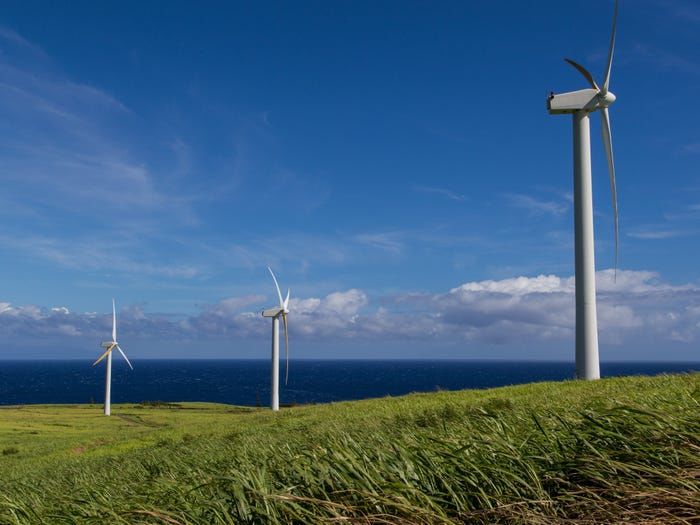
The entire state of Hawaii is leading the charge on sustainability, Bowman said. Two years ago, Gov. David Ige issued a declaration of commitment to sustainability — though the state's focus on sustainability started long before.
In 2014, Hawaii kicked off the Aloha+ Challenge to address six metrics from the United Nations Sustainable Development Goals (SDGs) by 2030, including clean energy transformation, local food production, management of natural resources, solid waste reduction, creating smart and sustainable communities, and building and educating a green workforce. The initiative comes with an online dashboard that allows the public to track the progress the state is making in these areas.
Bowman said the program is a great example of the state legislature in Honolulu working with nonprofits and private companies to achieve sustainability metrics. "If you don't measure it, you can't act upon it, so it's crucial in terms of sustainability and resilience," she added.
The city of Honolulu has a resilience strategy and set up a Resilience Office to track how climate change is affecting the city. It's examining "shocks" and "stresses," such as hurricanes, tsunamis, infrastructure problems, cost of living, and vulnerable communities.
Atlanta, Georgia
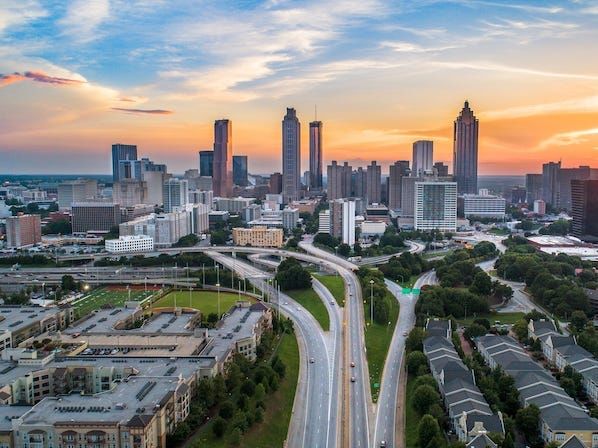 The population of Atlanta is expected to grow by nearly 3 million over the next few decades, adding to traffic woes.
The population of Atlanta is expected to grow by nearly 3 million over the next few decades, adding to traffic woes.
Atlanta has been growing exponentially, and the city is expected to add nearly three million more residents over the next couple of decades.
To handle the growth, city leaders and stakeholders have been focusing on traffic and transportation infrastructure. Part of the plan is to add more express lanes to highways, put sensors on some roads to detect traffic patterns and weather problems, and adjust traffic lights to help with flow.
Smart streetlights are also being added, and the city is testing a gunshot detection system that would send alerts to 911, police patrol cars, and residents' smartphones. Other systems would help drivers detect parking spots. Atlanta partnered with Georgia Power, AT&T, and Current by GE for the project.
"There's a lot of activity going on just in general around transit and Atlanta, in and around the larger metro area," Christopher Le Dantec, associate professor in the School of Interactive Computing and School of Literature, Media, and Communication at Georgia Tech, told Insider. That means thinking through the transportation of people and goods around the city and its suburbs.
"It's a very difficult problem to solve because there are so many different agencies at play," he added.
Other initiatives center on reducing the number of cars on the road. Atlanta is expanding its walking and biking plan, providing grants to help communities become more pedestrian-friendly and encouraging different types of commuting like carpooling, flexible work schedules, and working from home.
Incorporating more bike infrastructure has been several years in the making and involved collecting and analyzing data, Le Dantec said. "It was part of a transformation within the urban core of Atlanta, where there is now a lot more people moving around on bicycles, even prior to the past year's events," he added.
San Antonio, Texas
 San Antonio's Office of Innovation is focused in part on digital infrastructure.
San Antonio's Office of Innovation is focused in part on digital infrastructure.
Through its Office of Innovation, San Antonio has several infrastructure and technology projects in the works.
Some are still in the development phase, but so far some city vehicles have been equipped with sensors to gather real-time data on infrastructure and identify problems like potholes and then report them to the appropriate agency for repair. The goal is to reduce calls to the city and provide upkeep to areas that tend to be neglected.
Recently, San Antonio launched a Smart Streetlight Project that will have remote controls and sensors to monitor parking, air quality, temperature, noise, and flooding. The city also installed interactive digital kiosks at its transit hub and other locations to give residents and visitors real-time access to information about traffic, transit systems, and attractions, like local restaurants. The kiosks also provide free WiFi and access to city services.
Cities should view digital infrastructure as a way to rethink how people interact with their government and policymakers, and give residents easy access to details about what's going on in their city, Le Dantec said.
"Being able to actually show what those outcomes look like becomes a really powerful way to mobilize people toward addressing these issues," he said.
Technology in manufacturing is another key area for San Antonio. CyManII (Cybersecurity Manufacturing Innovation Institute), a Manufacturing USA institute located there, is focusing on cybersecurity and secure automation in manufacturing. These issues are critical today, as the manufacturing sector saw an uptick in ransomware attacks in 2020.
Raleigh-Durham, North Carolina
 Raleigh-based nonprofits like RIoT support entrepreneurship through pitch competitions and other events.
Raleigh-based nonprofits like RIoT support entrepreneurship through pitch competitions and other events.
The tri-city area of Raleigh, Durham, and Chapel Hill has long been known as a hub for innovation, technology, and entrepreneurship.
In fact, Raleigh ranks third on Forbes' list of the "Best Places for Business and Careers" for its economic and job growth and educated workforce.
Being a tech hub and supportive of entrepreneurs and startups has attracted new residents, making Raleigh one of the fastest-growing cities in the country.
The three cities also form the Research Triangle, along with North Carolina State University, Duke University, the University of North Carolina, and Wake Forest University. The Research Triangle Park is home to several major tech companies and known as a center for innovation and technology.
The presence and partnerships with universities is a central part of a smart, resilient city, Bowman said.
"You have world-class universities that have been fundamental to driving the innovation agenda," Bowman said. "It has attracted leading tech companies and other multinationals to that space. Not only is there the benefit of having universities in terms of being able to engage with them and co-create and co-test, it becomes a supplier of high-quality talent to those companies."
Several nonprofits exist across Raleigh-Durham, including Innovate Raleigh and RIoT, that are devoted to supporting innovation and entrepreneurship. The tech focus also extends to the manufacturing sector. The area houses a Manufacturing USA institute, PowerAmerica, focusing on semiconductor technology and electronics.
Madison, Wisconsin
 Students at the University of Wisconsin-Madison are encouraged to participate in sustainability initiatives.
Students at the University of Wisconsin-Madison are encouraged to participate in sustainability initiatives.
The Wisconsin state capital has an ambitious sustainability plan to reach zero-net carbon emissions and use 100% renewable energy for city operations by 2030. The plan sets specific goals for slashing overall energy and fuel consumption and making half of city buses electric by 2035.
Other city initiatives include increasing solar power by training unemployed and under-employed people in solar panel installation.
The city also has goals to improve air and water quality and transportation systems, support sustainable construction, affordable housing, and local food systems, economic and workforce development, and more.
The University of Wisconsin-Madison has a number of sustainability initiatives, too, like housing and grants for students who have ideas for enhancing sustainability on campus. The university is also working to align its sustainability goals with academics and research.
A part of its efforts are engaging key stakeholders, including universities, nonprofits, local business, and members of the public. Interviews, public meetings, and a new website in development will keep citizens informed of the progress and promote transparency.
Local governments too often overlook the need for communication, especially in innovation and digital transformation projects, Brian Chidester, head of worldwide industry strategy for the public sector at information management firm OpenText, told Insider.
"[Madison] has really embraced that piece of it," he said.
Phoenix, Arizona
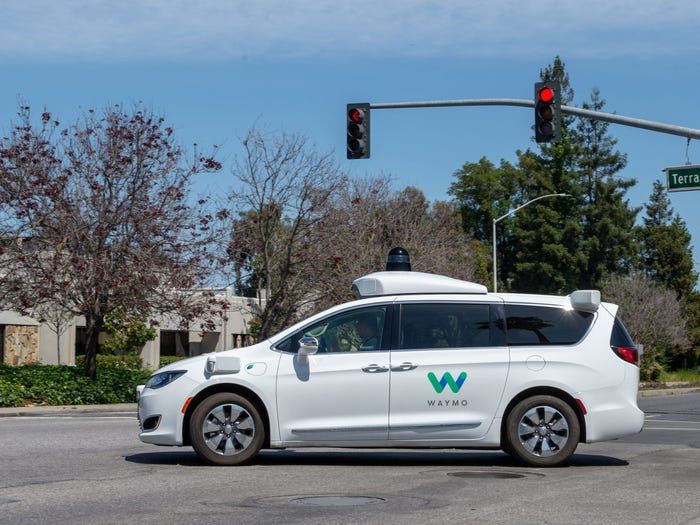 A Chrysler Pacifica outfitted with Waymo's self-driving technology.
A Chrysler Pacifica outfitted with Waymo's self-driving technology.
Phoenix, and the entire state of Arizona, has been working to become a leader in autonomous vehicles since 2015, when the governor signed an executive order to support the testing of driverless cars.
Phoenix has partnered with companies like GM and Lyft to allow hundreds of driverless cars to be tested on their roadways. Recently, the city began working with Waymo to launch a self-driving taxi fleet in nearby Tempe and Chandler.
"You just see the vehicles everywhere, the Waymo vehicles in particular, and we now have a long history, and it's just part of the landscape," Bowman said.
The state also created the Institute of Automated Mobility with Intel, Arizona State University, and other universities and organizations to research autonomous vehicles. Part of the goal is to create a regulatory framework that other places can model.
One setback to the self-driving initiative was a 2018 incident when a driverless Uber struck and killed a pedestrian in Tempe. Bowman said city leaders handled the investigation in a transparent way that regained community trust and investment in the program.
By investing in autonomous vehicle infrastructure and innovation, the hope is to cut down on traffic fatalities, help older people age in place, reduce traffic and the need for parking, and protect the environment, she explained.
"Integrating autonomous vehicles into your fleet has the potential to reduce congestion within cities, and that brings an environmental benefit with it," Bowman said.
Los Angeles, California
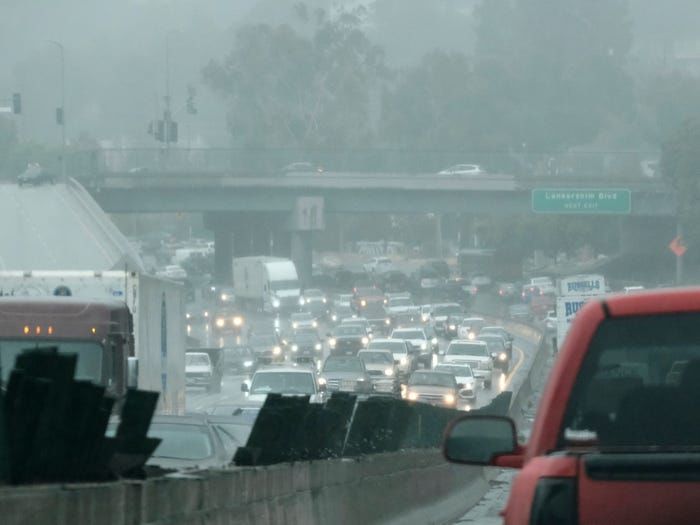 Traffic and road safety are the primary infrastructure topics in Los Angeles.
Traffic and road safety are the primary infrastructure topics in Los Angeles.
Los Angeles has emphasized its commitment to sustainability while addressing some of the city's biggest infrastructure concerns, like traffic and road safety.
A digital dashboard, called the pLAn, debuted to track and measure its Green New Deal sustainability plan. It keeps tabs on metrics like water and electricity usage, greenhouse gas emissions, and other sustainability efforts. And the data is open to the public.
"One of the things I really like about what we see in LA is not only do they make this public — and they have a fantastic dashboard that any citizen or any individual anywhere in the world can go to and see how they're doing based on hundreds of metrics — but they also have held themselves accountable," Bowman said. "They've done a voluntary review of how well they're doing, and the results of that review has then gone on to inform the next step."
Governments holding themselves accountable in this way is something other metros can learn from, she added.
Mayor Eric Garcetti has also set a goal of reducing carbon emissions to zero by 2045, and has a number of other goals to make the city more sustainable and reduce traffic.
For example, they're working on a network of bus-only lanes, adjusting traffic lights to put trains first over cars, launching an electric bus fleet, creating better traffic light synchronization, and debuting bike- and pedestrian-friendly projects.
Los Angeles is also home to one of the Manufacturing USA institutes, CESMII (Clean Energy Smart Manufacturing Innovation Institute), that focuses on smart sensor and digital process technology to make manufacturing more efficient.
Boston, Massachusetts
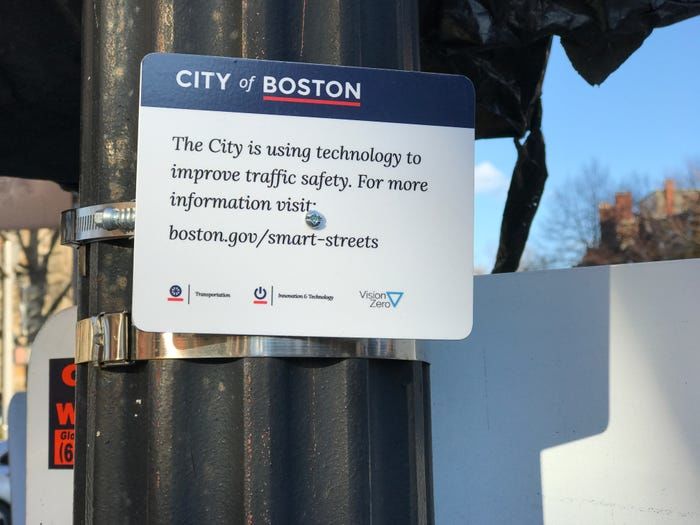 A Boston street sign highlights its Smart Vision project.
A Boston street sign highlights its Smart Vision project.
One of Boston's many innovation, infrastructure, and sustainability projects is the Vision Zero initiative, a smart-street project with the goal of reducing traffic accidents and fatalities through data gathering and analysis.
Through the program, Boston is investing in new infrastructure on the streets, including LED lights, surveillance cameras, sensors, and a public dashboard. The data collected will inform future decision-making on roadway improvements, like safer sidewalks and streets and advanced signage.
Other traffic-centric innovative infrastructure programs include giving drivers real-time information about where to find parking spaces or suggestions for taking another form of transportation. The point is to reduce traffic congestion and carbon emissions. The city is also working on driverless car testing, smart parking sensors, and IoT.
Additionally, Boston is working to modernize information systems and technology in utility infrastructure to make utilities more affordable, equitable, and sustainable through the Smart Utilities Vision project.
"[Boston] has been trying to position itself as a technology hub, so that's part of what's driving a lot of their digital transformation infrastructure," Chidester said.
Investing in innovation and infrastructure tends to attract larger companies and a highly skilled workforce, which boosts the economy, he added. Specifically, Boston has developed an environment to draw and support fintech companies.
The Boston area has the advantage of having several universities, including Harvard and Massachusetts Institute of Technology, which the city partners with to test new technology and other projects.
"One of the things you see is cities with large, very advanced universities with good engineering programs are some of the furthest along, simply because they've got the partnership between academia and city government," Schafer said. "You've got engineering programs going to the city to say, 'Hey, we're working on this technology to be tested in our city.'"
Denver, Colorado
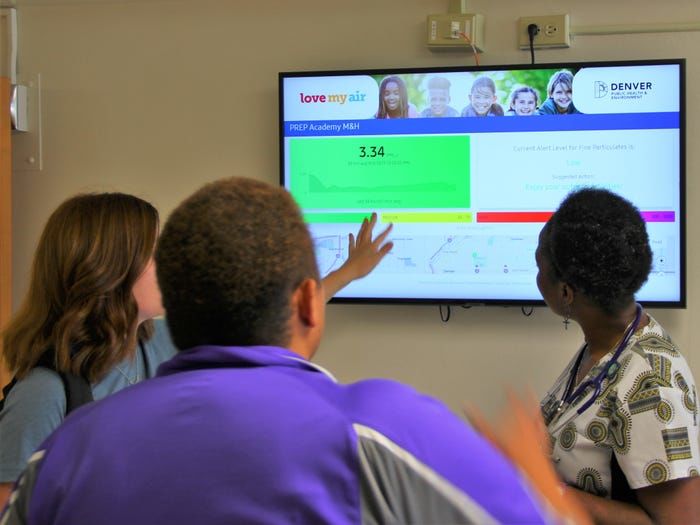
Denver's population has increased 20% over the last 10 years, so the city has seen more construction and traffic, which has worsened its air quality.
To address the issue, they launched Love My Air, a program to measure air quality in real time using pollution sensors.
The city is tackling its transportation issues by participating in Vision Zero, like Boston. This includes launching an intelligent transportation system to address traffic and road safety. The program will deploy connected vehicle technology to allow trucks to communicate with traffic signals and connect city vehicles.
And to address and manage data around its infrastructure, Denver is creating an IoT platform to gather data about transportation, environmental health, weather, and freight. The data is pulled from road and weather sensors, street lights, universities, and other city infrastructure, which the city will use to drive future projects.
Denver also has a partnership with Panasonic on a project called CityNow. It's creating smart city infrastructure in a remote area that includes high-tech highways and driverless vehicles. They've installed WiFi, LED street lights, pollution sensors, security cameras, and a solar-powered microgrid.
One challenge cities face in their digital transformation and innovation initiatives is that they start small, maybe with specific neighborhoods. While this makes sense, Chidester said it often creates disparate technologies, giving cities an additional challenge of making everything work together for the benefit of residents.
"You're not going to drop a whole bunch of technology to encompass the entire city," he said. "Ultimately, as you crawl, walk, run, there's the need to ensure interoperability, and the ability to take information and analytics and drive value on behalf of their citizens."
Data and analytics are necessary for sustainability and infrastructure efforts. But another issue cities will need to address revolves around the data they're collecting through sensors and other means, Schafer said — specifically, who owns the data and what it's all used for. And do citizens have the right to take their data back?
"That's a thorny issue that a lot of them are going to have to deal with," he said. "Whether they like it or not, it's coming."

